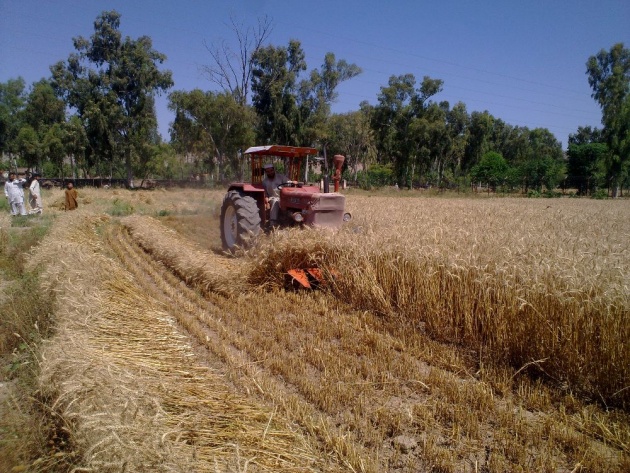Wheat (Triticum aestivum L.) is a staple food crop of Pakistan. Wheat flour is a major dietary and its straw is a major cattle fodder in winter months. The wheat occupies a central position in the farming system of Pakistan. However, farmers grow low yielding local cultivars, which are susceptible to diseases like rusts, smuts and lodging. The yield in such places is about 30 percent lower than national average (Anonyms 2000). Low yield of wheat may be attributed to poor soil fertility, lack of irrigation water, weeds infestation, use of old agronomic practices and varieties of low yield. High yield potential varieties play a pivotal role in increasing per hectare yield under optimum growing season. Although many high yielding wheat varieties have been evolved and recommended for general cultivation in the past but their performance under farmer’s field is not up to the mark as these have lost their adaptability to environmental conditions. (Qasim et al. 2008)
Every crop variety has its own definite climatic requirements (for particular environmental conditions) for optimum growth and high grain yield. Delayed sowing of cereals not only affects germination and growth but also affects grain development. Haq and Khan,2000 & Razzaq et al. 1986, suggested mid November planting to be superior to delayed planting in agro-ecological conditions like Northern Areas. As planting time is a crucial factor for obtaining desirable wheat yield so a need was felt to study growth and yield behavior of four cereal Crops under different sowing dates in Kohat district.
Triticale is a hybrid that is a cross between wheat and rye and is used in grain production or more commonly as forage. Washington is the leading grower of triticale in the United States. Triticale is used as feed for swine, cows and poultry and is generally higher in protein and amino acids than wheat or barley. It can be used as a finishing diet for livestock thus reducing the use of corn. It is becoming a major part of nutritional management plans for dairies by providing them with a good alternative to wheat silage, and permitting year round silage feeding. If not harvested quickly enough for silage usage it can be made into hay. Triticale straw can also be used as a bedding material. In some areas of the world, triticale is processed into flour but rarely in this county. Currently some triticale- based foods are available in health food stores and in some breakfast cereals. Triticale is a deep-rooted crop with almost twice the root mass of other cereals. As a rotational crop, it reduces soil erosion, can capture excess soil nitrogen, and requires very few pesticides. This makes it a good crop for organic farming. There are both spring and winter varieties. Winter triticale is usually sown in late August and can provide fall and winter grazing. It is cut for silage in August. In addition to the winter triticales, spring varieties are also available and in trials at Prosser are showing the potential to out yield barley. Triticale is also being looked as a potential energy crop and research is being done on the use of energy crop biomass in bioethanol production.




